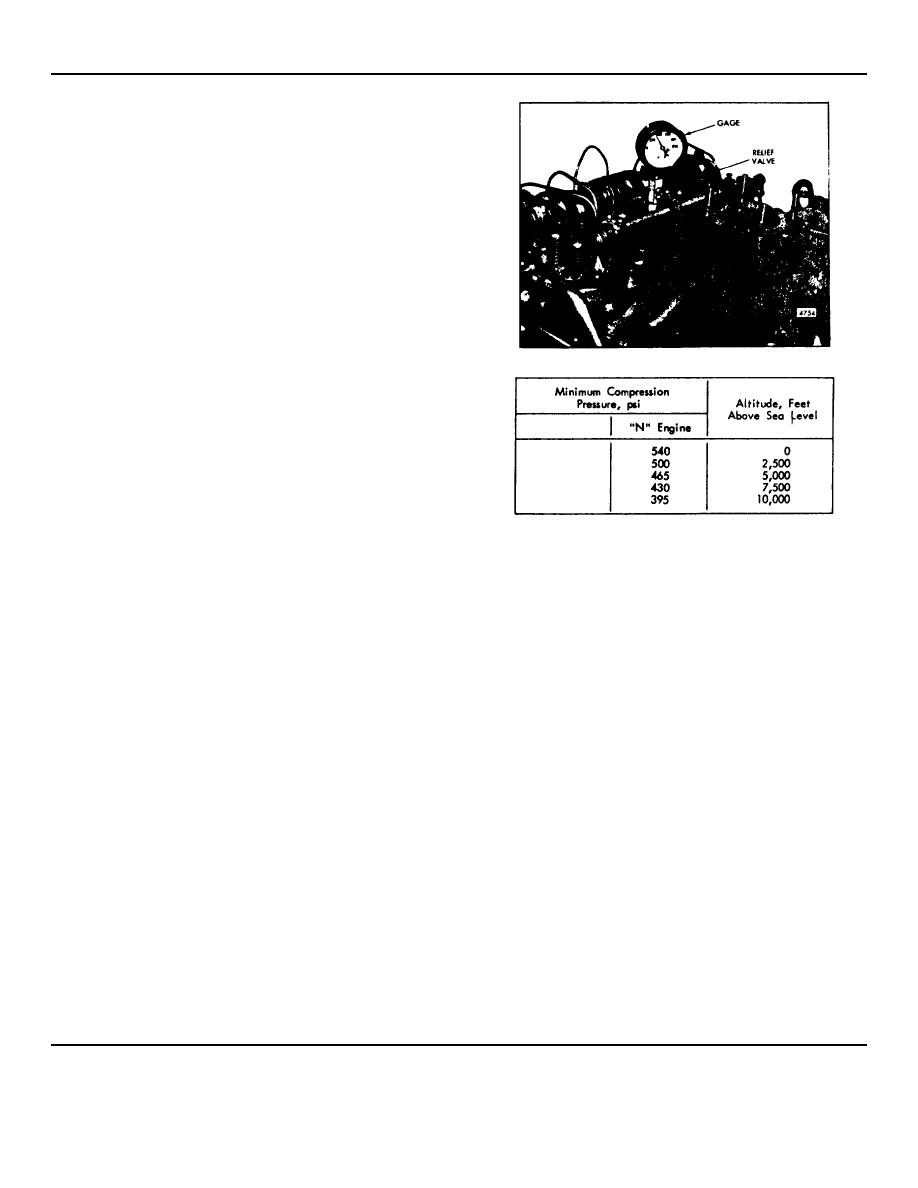
DETROIT DIESEL 53
15.2
TROUBLE SHOOTING
Certain abnormal conditions which sometimes interfere
with satisfactory engine operation, together with
methods of determining the cause of such conditions,
are covered on the following pages.
Satisfactory engine operation depends primarily on:
1. An adequate supply of air compressed to a
sufficiently high compression pressure.
2. The injection of the proper amount of fuel at the
right time.
Lack of power, uneven running, excessive vibration,
stalling at idle speed and hard starting may be caused
by either low compression, faulty injection in one or
Fig. 1. - Checking Compression Pressure
more cylinders, or lack of sufficient air.
Since proper compression, fuel injection and the proper
amount of air are important to good engine
performance, detailed procedures for their investigation
are given as follows:
Locating a Misfiring Cylinder
1. Start the engine and run it at part load until it reaches
normal operating temperature.
Check the compression pressure as follows:
2. Stop the engine and remove the valve rocker
1. Start the engine and run it at approximately one-half
cover(s).
rated load until normal operating temperature is
reached.
3. Check the valve clearance.
2. Stop the engine and remove the fuel pipes from the
4. Start the engine. Then, hold an injector follower
injector and fuel connectors of the No. I cylinder.
down with a screw driver, thus preventing operation of
the injector. If the cylinder has been misfiring, there will
3. Remove the injector and install the adaptor J
be no noticeable difference in the sound and operation
791502 and pressure gage and hose assembly J 6992
of the engine. If the cylinder has been firing properly,
(Fig. I).
there will be a noticeable difference in the sound and
operation when the injector follower is held down. This
4. Use a spare fuel pipe and fabricate a jumper
is similar to short-circuiting a spark plug in a gasoline
connection between the fuel inlet and return manifold
engine.
connectors. This will permit fuel from the inlet manifold
to flow directly to the return manifold.
5. If the cylinder is firing properly, repeat the procedure
on the other cylinders until the faulty one has been
5. Start the engine and run it at a 600 rpm. Observe
located.
and record the compression pressure indicated on the
gage.
6. Provided the injector operating mechanism of the
faulty cylinder is functioning satisfactorily, remove the
Do not crank the engine with the starting motor to obtain
fuel injector and install a new one.
the compression pressure.
7. If installation of a new injector does not eliminate
6. Perform Steps 2 through 5 on each cylinder. The
the misfiring, the compression pressure of the cylinder
compression pressure in any one cylinder should be not
in question should be checked.
less than
(540 psi for 53N engines) at 600 rpm. In
Checking Compression Pressure
addition, the variation in compression.
Compression pressure is affected by altitude as follows:
1970 General Motors Corp.
October, 1970
SEC. 15.2 Page 1

